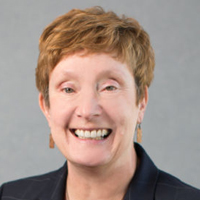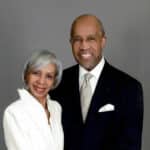
As we work with clients throughout their primary career, their emphasis is often on making money and advancement. I’ve advised friends, colleagues and clients for years when considering promotions or job changes to think about the step beyond this job offer. The focus is on advancement: Where will this job take you?
However, as clients leave their primary careers, either by choice or by circumstance, the emphasis often shifts. If you’ve helped your client build their wealth, the focus can turn from money, power and advancement to purpose. After clients have built a decades-long successful career, they can be tired of the grind. Some are cynical about the corporate world from which they’ve had great success. Whether they loved their career or were starting to lose their “mo-jo,” it’s a major transition to leave one’s primary career. Few clients want to do more of the same; they want to do something different.
I hear from many clients a feeling of wanting to make a difference, to use their skill and talents in a more meaningful way. You can call this purpose. Merriam Webster dictionary defines Purpose as “something set up as an object or end to be attained — intention.” This intention replaces the drive for power or high pay. They have a chance now to be purpose-driven in their work.
For some clients, the word “purpose” or purpose-driven can be overwhelming. I’ve dealt with numerous people who get stressed out in trying to figure out their purpose. It makes it feel as if there is one perfect thing, and none of us do well when perfection is the goal. Instead, I focus clients on “passions.” Most of us typically have several passions and this makes it less daunting.
To help clients figure out their purpose or passion takes a combination of analysis and action. Too often, people get stuck analyzing and never take action. Your role as their financial advisor is to be a coach — ask good questions, be patient, provide resources, and encourage. Validate that what they are experiencing you have seen with other clients. Here are steps and resources to use to help clients:
ANALYSIS
As clients determine “what’s next” after their primary career, identifying their values, passions and strengths can help them pull together and synthesize their thinking. Much of this is self-discovery and should not be rushed. Encourage your client to take time to reflect.
Values
There are several assessments available for your client to clarify their values. To me, values are a key building block to understanding your “purpose” or intention. Two tools that I’ve used with clients:
1) www.Think2perform.com provides an online card sort tool that is challenging as it forces one to hone in on five values. Believe me, this is difficult. In years past, I’ve used a deck of “values cards” and encouraged clients to initially set them out on a table and then come back to them in subsequent days. The tactile nature and ability to reflect, walk away, return and modify is beneficial. That said, the online tool is easy to use.
2) www.lifevaluesinventory.org also provides a value clarifying tool that takes it a step further to have clients link their values with their current life — how their highest priority values show up in work, relationships, community, leisure and other activities.
Passions
Passions are joyful things in one’s life. What makes you light up? What do you easily get energized about? I encourage clients to think back to their childhood and on through their life and build a list of those items that are joyful to them. I recently found a Passion Quiz — a list of 10 questions originally developed by Janet Bray Attwood and Chris Attwood, coauthors of “The Passion Test: The Effortless Path to Discovering Your Life Purpose.” Some of my favorite questions:
1. When I was a kid, I dreamed of____________
2. If I take a week off work, I would spend it__________
3. Most people don’t know this about me, but I really enjoy_____________
4. I am the go-to person when my friends need_________________________
5. The closest I come to a runner’s high is when____________________
Clients should complete these questions, then come back to it to see what else jumps out. It’s also important to think about who — who/what they want to help or work with. Is it younger leaders? Teenagers? Young kids? The elderly? The environment? Animals? Be specific.
Strengths
I’m a big believer in the StrengthsFinder tool (now called Clifton Strengths) from the Gallup organization and Tom Rath’s book “StrengthsFinder 2.0”. Many clients may already have taken this assessment in their primary career. If they haven’t taken it, they can either go online or purchase the book. Now it’s time to think about those strengths and how to apply them in this next phase.
- Teaching
- Consulting
- Interim C-level work for not-for-profits
- Working within entrepreneur programs as a coach, teacher, mentor
- Corporate Board work
- Not for profit leadership roles in causes they care about
- Coaching — I’ve had several friends/clients become golf coaches at the high school level — to teach kids the sport they love
- Pet-sitting
- Drivers for senior living communities
- Yoga instructor, fitness trainer
ACTION
With some clarity about who they are right now and what might excite them, it’s time for action. Small steps are preferable to over-committing too early. A couple ways to explore:
Interviews
Encourage your client to build a list of people who might be doing similar work and meet with them. Connect them to people in your network who might be worthwhile to talk with. Your client should be asking key questions about these roles — the good, the bad, the key challenges/frustrations, what is “success,” etc.
Sample
If possible, your client should try to “sample” the area they are most interested in. They can volunteer without pay for certain organizations, or perhaps shadow someone doing the work. For example, if they are interested in becoming a yoga instructor, perhaps start taking action to obtain necessary certification — a good way to test if it really brings them joy. If they want to consult or do interim C level work, network enough to get one project. I’ve seen friends and clients volunteer for organizations like SCORE, that supports local small businesses, and then end up taking paid roles because they love using their skills and values to mentor and help these businesses succeed. It’s gratifying in ways their primary careers may not have been.
The key is, don’t overcommit. Try something and commit to a specific timeframe or project. Who knows where it will lead! Prepare your clients that it may take several attempts to find one that works for them.
By helping your clients to figure out their next career, you will likely deepen the relationship you have with them. They will view you as an advisor and coach that supports their dreams. Leaving one’s primary career is one of the most significant transitions people make in their lives; be there to support and guide them through it. You will both find it gratifying, I suspect.
Joni Lindquist, MBA, CFP®, is a principal at Aspyre Wealth Partners in Overland Park, Kan. As a career coach and financial planner, she partners with clients on their life’s journey to live the life they want. She finds it rewarding to help them advance in their careers, manage life transitions, and clarify and reach their life goals.






